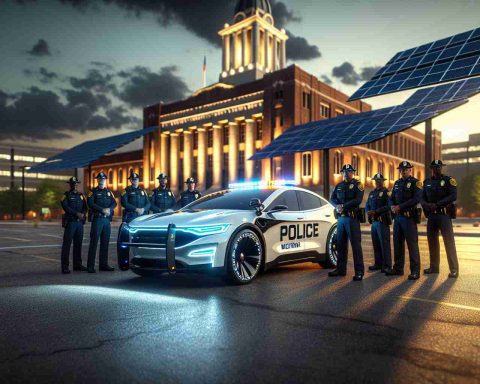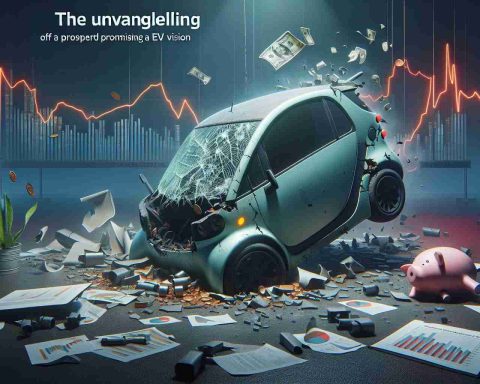Are E-Scooters Treading on Thin Ice?
A recent observation on the roads highlights a serious concern regarding e-scooter safety. An electric scooter rider was spotted swerving recklessly while consuming a beverage, raising questions about their compliance with existing laws.
In the UK, riding privately owned e-scooters on public roads, pavements, or any public spaces is illegal unless connected to a government-sanctioned rental scheme. This particularly applies under the Road Traffic Act and the Road Traffic Regulation Act, which categorize e-scooters as motor vehicles. Any severe incident involving an e-scooter is scrutinized like any case involving more traditional vehicles such as cars and motorcycles.
Riding an e-scooter while distracted, such as using a phone or exceeding speed limits, can lead to legal consequences, including hefty fines, penalty points, and potential prison time. However, enforcement presents challenges; without being stopped, identifying lawbreakers becomes complicated, especially with many roads monitored primarily by cameras.
Moreover, there’s a notable gap in legislation pertaining to cyclists. While there are no direct laws for drink-driving or speed limits for bicycles, unsafe cycling conduct is technically punishable. The fines and consequences for cyclists, however, are minimal in comparison to those for motorists, creating an apparent imbalance in road safety regulations.
As e-scooter usage continues to rise, the importance of stringent laws and effective enforcement becomes increasingly crucial to ensure road safety for all.
Are E-Scooters Threatening Road Safety and Legislation?
The rise of e-scooters in urban environments has brought about significant discussions surrounding road safety and legal implications. With incidents highlighting reckless behavior among riders, the ongoing debate over e-scooter regulations is more pressing than ever.
Safety Concerns and Legal Framework
E-scooters are often viewed as a convenient mode of transportation, but their usage is shrouded in legal constraints. In the UK, for instance, riding privately owned e-scooters in public spaces is illegal unless part of an authorized rental scheme. This stems from laws established under the Road Traffic Act and the Road Traffic Regulation Act, which classify e-scooters as motor vehicles. Consequently, incidents involving e-scooters are treated similarly to those involving cars and motorcycles, drawing attention to the need for oversight and safety measures.
Rising Incidents and Enforcement Challenges
As e-scooter popularity increases, so do the incidents of misuse. Riding while distracted—be it consuming beverages, using mobile phones, or ignoring speed limits—can result in serious legal ramifications such as fines, penalty points, or even imprisonment. However, enforcement poses significant challenges. With many areas monitored predominantly by cameras, identifying reckless riders becomes a complex issue.
Legislative Gaps: Cyclists vs. E-Scooter Riders
One notable disparity in road regulations is the treatment of cyclists compared to e-scooter users. Currently, cyclists face minimal penalty for unsafe behaviors, as there are no specific laws against drink-driving or speed limits similar to motor vehicle regulations. This inconsistency may create a perplexing situation for law enforcement and contributes to overall road safety concerns.
Pros and Cons of E-Scooter Usage
Pros:
– Eco-Friendly Transportation: E-scooters provide a greener alternative to traditional vehicles, helping to reduce carbon emissions.
– Convenience: They offer a quick, nimble way to navigate urban areas, especially for short commutes.
– Cost-Effectiveness: E-scooter rides tend to be cheaper than taxis or public transport in many cases.
Cons:
– Safety Risks: As evidenced by recent incidents, e-scooter riders can pose risks to themselves and others when not adhering to regulations.
– Legal Uncertainty: The lack of comprehensive laws governing their use creates confusion and potential legal consequences for riders.
– Infrastructure Limitations: Many cities lack the necessary infrastructure to safely accommodate e-scooter riders alongside pedestrians and motorists.
Future Trends and Insights
As e-scooters continue to become integrated into urban transport systems, several trends are emerging:
– Increased Regulation: Expect more governments to establish comprehensive laws governing e-scooter usage to enhance road safety.
– Technological Innovations: Companies are likely to innovate, integrating features such as speed limits, geofencing, and helmets detection into e-scooters to promote safer riding habits.
– Public Awareness Campaigns: Educational initiatives aimed at promoting safe riding practices could emerge as cities respond to the rising number of incidents.
Conclusion
The growth of e-scooters in urban centers poses both opportunities and challenges. The key to their successful integration into public transport lies in creating a balanced legislative environment that encourages safe riding while minimizing risks to public safety. Stakeholders must prioritize effective enforcement, public education, and infrastructure development to ensure e-scooters contribute positively to urban mobility.
For more information on transportation trends and regulations, visit Transport UK.













